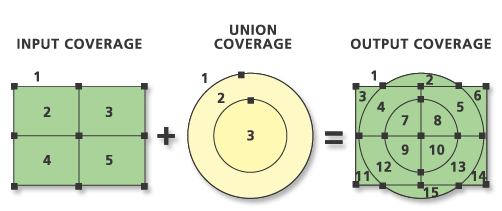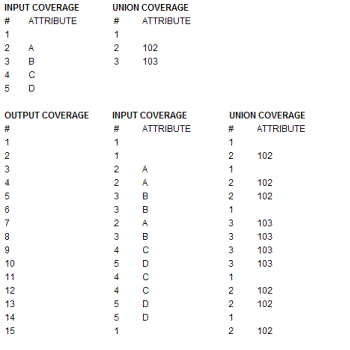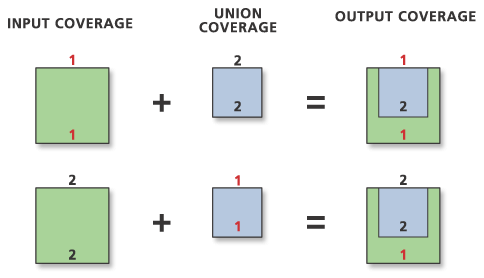The Union tool creates a new coverage by overlaying two polygon coverages. The Output Coverage contains the combined polygons and attributes of both coverages.
Only polygon coverages can be combined using Union. Arcs of the Input Coverage polygons are split at their intersection with polygons of the Union Coverage. The resulting arcs are used to build polygons using a process similar to the Build tool with the POLY option.
The feature attribute table for the Output Coverage contains items from both the input and Union Coverage attribute tables. Items are merged into the output polygon feature class using the old internal number of each polygon. The following table list the items that are saved in the polygon feature class for the Output Coverage.
For polygon input coverages
| Using the JOIN option (default) | Using the NO_JOIN option |
|---|---|
|
|
Union is one of several Overlay commands available in the Coverage toolbox. Two others are similar: Intersect and Identity. They differ from Union only in the features that remain in the Output Coverage. The attribute tables are updated for all three commands.


If arcs in the Input Coverage and the Union Coverage overlap, then after running a Union followed by a Build LINE, the User-IDs of the arcs in the Input Coverage will take precedence over the overlap sections. The rest will retain their User-IDs. The diagram below illustrates the effect of switching the Input Coverage with the Union Coverage and the resulting User-ID of the segment of the arc that overlaps in the Output Coverage.
